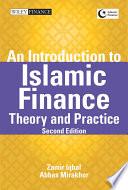
Risk Management for Islamic Banks
Recent Developments from Asia and the Middle East
Gain insight into the unique risk management challenges within the Islamic banking system Risk Management for Islamic Banks: Recent Developments from Asia and the Middle East analyzes risk management strategies in Islamic banking, presented from the perspectives of different banking institutions. Using comprehensive global case studies, the book details the risks involving various banking institutions in Indonesia, Malaysia, UAE, Bahrain, Pakistan, and Saudi Arabia, pointing out the different management strategies that arise as a result of Islamic banking practices. Readers gain insight into risk management as a comprehensive system, and a process of interlinked continuous cycles that integrate into every business activity within Islamic banks. The unique processes inherent in Islamic banking bring about complex risks not experienced by traditional banks. From Shariah compliance, to equity participation contracts, to complicated sale contracts, Islamic banks face unique market risks. Risk Management for Islamic Banks covers the creation of an appropriate risk management environment, as well as a stage-based implementation strategy that includes risk identification, measurement, mitigation, monitoring, controlling, and reporting. The book begins with a discussion of the philosophy of risk management, then delves deeper into the issue with topics like: Risk management as an integrated system The history, framework, and process of risk management in Islamic banking Financing, operational, investment, and market risk Shariah compliance and associated risk The book also discusses the future potential and challenges of Islamic banking, and outlines the risk management pathway. As an examination of the wisdom, knowledge, and ideal practice of Islamic banking, Risk Management for Islamic Banks contains valuable insights for those active in the Islamic market.
- ISBN 13 : 1118734459
- ISBN 10 : 9781118734452
- Judul : Risk Management for Islamic Banks
- Sub Judul : Recent Developments from Asia and the Middle East
- Pengarang : Imam Wahyudi, Fenny Rosmanita, Muhammad Budi Prasetyo, Niken Iwani Surya Putri, Fenny Rosmanita, Muhammad Budi Prasetyo, Niken Iwani Surya Putri, Fenny Rosmanita, Muhammad Budi Prasetyo, Niken Iwani Surya Putri, Fenny Rosmanita, Muhammad Budi Prasetyo, Niken Iwani Surya Putri, Fenny Rosmanita, Muhammad Budi Prasetyo, Niken Iwani Surya Putri, Fenny Rosmanita, Muhammad Budi Prasetyo, Niken Iwani Surya Putri,
- Kategori : Business & Economics
- Penerbit : John Wiley & Sons
- Bahasa : en
- Tahun : 2015
- Halaman : 256
- Google Book : https://play.google.com/store/books/details?id=Lg2ACgAAQBAJ&source=gbs_api
-
Ketersediaan :
Development of the Islamic Financial Market 297 used, leverage in the financial system increased to extremely large and unsustainable levels, the risk-transfer process occurred without limitations or control through various derivative ...









